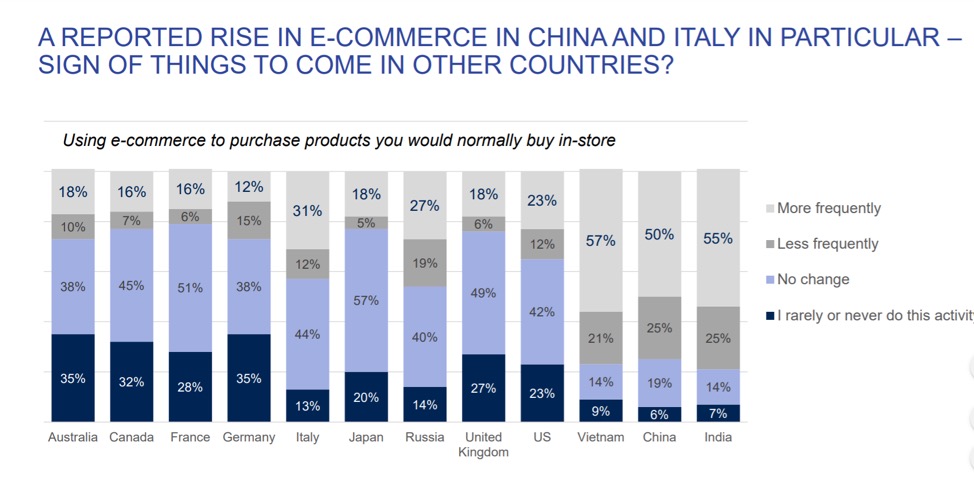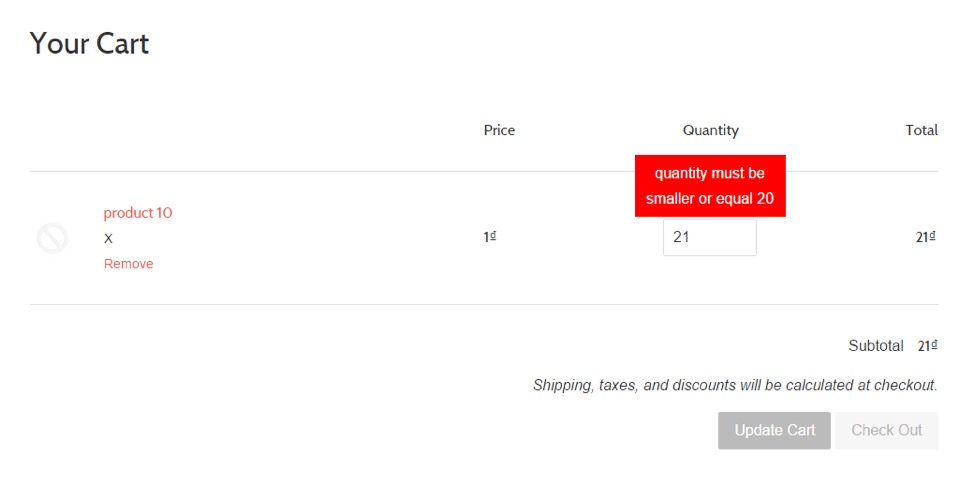The Covid-19 pandemic has floor regular life
to a halt in lots of nations. Mass lockdowns, college closures, bans on
non-essential providers and huge gatherings have compelled individuals indoors and
restricted financial actions. Industries
from manufacturing to journey are feeling the pinch as shoppers hunker down at
house to gradual the unfold of the novel coronavirus.
One sector experiencing a surge amidst the downturn is Ecommerce. Ipsos MORI studies that fifty% of Chinese language buyers and 31% of Italian shoppers use ecommerce platforms extra often to buy gadgets they normally purchase in-store because the coronavirus outbreak. Chinese language ecommerce giants, JD Doajia and Alibaba, have reported a 470% and 220% enhance respectively in gross sales this yr in comparison with final yr because the pandemic started.


Nations just like the US, Vietnam and India have seen a 23%, 57% and 55% enhance in on-line purchasing for a similar interval. Instacart, an American on-line grocery retailer, says gross sales grew tenfold within the first week of March in comparison with the earlier week. One other American on-line grocer, Farmstead, reported a 30% enhance in supply orders the primary week of March in comparison with earlier weeks.
This world pandemic can be fueling a fast adoption of on-line purchasing amongst older shoppers who’re extra weak to the virus. In China, Alibaba says the variety of orders positioned by individuals born within the Sixties has quadrupled this yr when in comparison with final yr. Within the US, 9 out of 10 shoppers aged 45+ say they may keep away from each purchasing malls and bodily shops if the outbreak worsens. Older individuals will more and more use on-line shops because the coronavirus an infection charges develop.
Challenges Ecommerce Shops Will Face with Elevated Demand
Given the reliance of complete nations on
ecommerce to maintain its populace and financial system throughout this viral pandemic,
ecommerce shops will face many challenges to fulfill this elevated demand.
One problem ecommerce shops will face is
demand outstripping provide. Since all ages group is purchasing on-line to keep away from
contact with potential an infection, orders might outpace inventory. Amazon’s Complete
Meals is being overwhelmed by grocery supply orders
with clients seeing a banner that claims “Stock and supply availability could also be briefly
restricted as a result of elevated demand. Affirm availability at checkout.” This
perceived shortage will result in shoppers shopping for greater than they want and
hoarding items as a result of they imagine they might not discover merchandise once they want
them. This conduct will enhance the inventory shortages on-line shops are already
experiencing.
One other problem for ecommerce shops with elevated demand is achievement.
Francis Teo of Blue Lambda, an ecommerce targeted optimization company, breaks it down:
Elevated demand signifies that for groceries and medical provides, it’s now not a advertising downside. The issue turns into considered one of whether or not you will get provide (provide chain), and whether or not you will get these groceries and medical provides to clients.
Due to this elevated demand, the logistics methods worldwide are below a variety of pressure. That is made worse by lockdowns all all through the world, which signifies that each on the provision chain and the client supply finish, it’s a problem to each get merchandise imported, and in addition get merchandise into the arms of consumers.
With extra orders, logistics might develop into overwhelmed and this may trigger delays. These will result in clients inundating the shop’s buyer help brokers with calls and inquiries about their orders.
When ecommerce shops run out of inventory, restocking will not be an possibility because the coronavirus pandemic has disrupted provide chains worldwide. On-line shops that supply inventory from China and different Asian nations might not restock since factories in affected areas are closed to curtail the unfold of Covid-19. US retailer Greatest Purchase sources 60% of its merchandise from China and should face issues restocking merchandise in time for seasonal holidays like again to high school in September.
How Ecommerce Shops Can Cope with Elevated Demand
A customer-focused method is essential to fixing
the crises that elevated demand brings. With shoppers abandoning brick and
mortar shops throughout this viral epidemic, on-line shops can put their clients
first, enhance revenue, and assist native companies impacted by this viral
outbreak.
Ecommerce platforms can associate with native outlets and supply them a platform the place they will promote on to shoppers who now want to buy on-line. This can assist ecommerce shops preserve a gradual provide that meets the elevated demand. Ecommerce shops can deal with hoarding by means of limiting the variety of merchandise a shopper can order.


And partnering with native shops can assist them
generate income to allow them to keep in enterprise regardless of the pandemic. Alibaba’s
Cainiao community hyperlinks offline native shops to on-line
consumers. As shoppers keep indoors and order on-line, these native shops develop into mini-distribution
facilities for items they promote, which helps cut back supply instances. Amid a lockdown
in cities like Wuhan, Alibaba might nonetheless ship meals and medical provides inside
the affected cities, thanks to an intensive community of native retailers on their
platform.
One other smart way ecommerce shops are coping with elevated demand is hiring extra employees to deal with the elevated demand for merchandise, quick supply and buyer help. Amazon plans so as to add 100k employees to its workforce to cope with elevated on-line orders. Walmart and Kroger additionally plan to extend their workforce by 150k and 10k respectively to deal with rising calls for as shoppers keep house and store on-line. Whilst eating places lay off employees, Pizza chain Domino’s is including 10k employees to its labor pressure amidst the pandemic.
On fixing supply and achievement challenges, Francis says:
Ecommerce shops ought to leverage and strengthen relationships with suppliers and logistics suppliers. In order that they will each get the merchandise into warehouses, and get the merchandise into the arms of consumers.
As well as, it is sensible to be sure that the provision chain all the way in which to the producer has contingencies to make sure that provide is assured even when this pandemic is to final a very long time.
Whereas many corporations supply merchandise from China, most don’t supply all their merchandise completely from there. Ecommerce shops can shift manufacturing from China to nations like Taiwan, Vietnam, Indonesia, and so forth. the place the outbreak is gentle and hasn’t affected manufacturing facility outputs. It will assist ecommerce shops climate the provision chain disruptions with satisfactory inventory.
Conclusion
With this pandemic, extra individuals will depend on
ecommerce shops to entry meals, fundamental cleansing and medical provides. Ecommerce
companies can meet this surge in demand by hiring extra employees to deal with
achievement and customer support, partnering with native companies to extend
inventory, and forestall hoarding.
Offering impeccable service throughout this
pandemic won’t solely enhance belief in ecommerce shops, it is going to
revolutionize how individuals store even when the pandemic ends.
Is your ecommerce enterprise rising as much as these difficult instances? Tell us what modifications you’ve made to make your clients a precedence.
Initially revealed June 01, 2020 – Up to date December 19, 2022
Cell studying?
Authors
Editors

Carmen Apostu
In her function as Head of Content material at Convert, Carmen is devoted to delivering top-notch content material that folks can’t assist however learn by means of. Join with Carmen on LinkedIn for any inquiries or requests.






